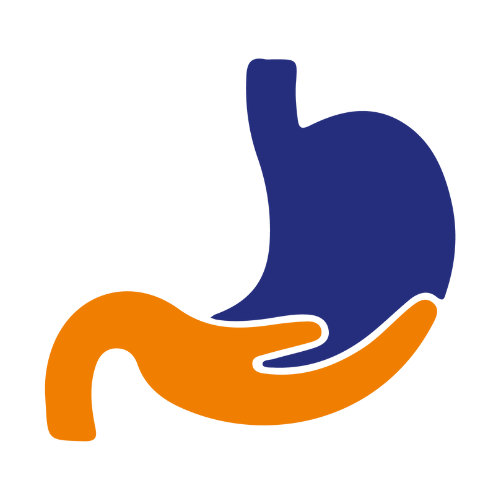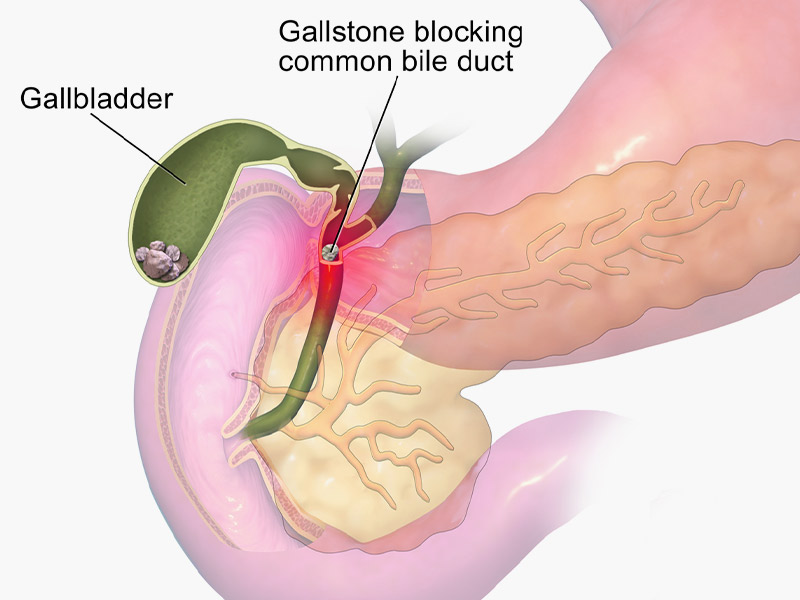Common Bile Duct (CBD) Stones
A bile duct stone is a gallstone that becomes trapped in the bile duct. Doctors may refer to this condition as choledocholithiasis. Choledocholithiasis is the presence of a gallstone in the common bile duct. Gallstones usually form in your gallbladder.
The bile duct is the small tube that carries bile from the gallbladder to the intestine. The gallbladder is a pear-shaped organ below your liver in the upper right side of your abdomen. These stones usually remain in the gallbladder or pass through the common bile duct unobstructed.
What are the Symptoms?
Gallstones in the bile duct may not cause symptoms for months or even years. But if a stone becomes lodged in the duct and obstructs it, you may experience the following:
- Abdominal pain in the right upper or middle upper abdomen
- Fever
- Jaundice (yellowing of the skin and eyes)
- Loss of appetite
- Nausea and vomiting
- Clay-colored stools
The pain caused by gallstones in the bile duct can be sporadic, or it can linger. The pain may be mild at times and then suddenly severe. Severe pain may require emergency medical treatment. The most severe symptoms may be confused with a cardiac event like a heart attack.
When a gallstone is stuck in the bile duct, the bile can become infected. The bacteria from the infection can spread rapidly, and may move into the liver. If this happens, it can become a life-threatening infection. Other possible complications include biliary cirrhosis and pancreatitis.
What are the Causes?
There are two types of gallstones: cholesterol gallstones and pigment gallstones.
Cholesterol gallstones often appear yellow and are the most common type of gallstone. Scientists believe that cholesterol stones are caused by bile that contains:
- Too much cholesterol
- Too much bilirubin
- Not enough bile salts
They may also occur if the gallbladder does not empty completely or often enough.
The cause of pigment stones is not known. They seem to occur in people who have:
- Cirrhosis of the liver
- Biliary tract infections
- Hereditary blood disorders in which
- The liver makes too much bilirubin
How is it Diagnosed?
- Medical history review, including any recent symptoms
- A physical examination during which a doctor may press on the abdomen to identify tender areas
- Blood tests to look for markers of pancreas or liver inflammation imaging tests to look for stones trapped in the bile duct
What are the Risk Factor?
- Obesity
- Low-fiber, high-calorie, high-fat diet
- Pregnancy
- Prolonged fasting
- Rapid weight loss
- Lack of physical activity
- Age: older adults typically have a higher risk for gallstones
- Gender: women are more likely to have gallstones
- Ethnicity: Asians, American Indians, and Mexican Americans are at higher risk for gallstones
- Family history: genetics may play a role
How is it Treated?
Treatment almost always requires surgery to remove the stones, and there are several different procedures. A doctor may also recommend removing the gallbladder to reduce the risk of developing additional stones.
Before surgery, it is important to stabilize a person as much as possible. A doctor may recommend additional treatments, including:
- Pain medication
- Intravenous fluids for pancreatitis
- Antibiotics
- Monitoring in the hospital to ensure that the person is stable enough for surgery
Sometimes, a doctor will recommend immediate emergency surgery. In other cases, a person may wait anywhere from a few hours to a few days.

